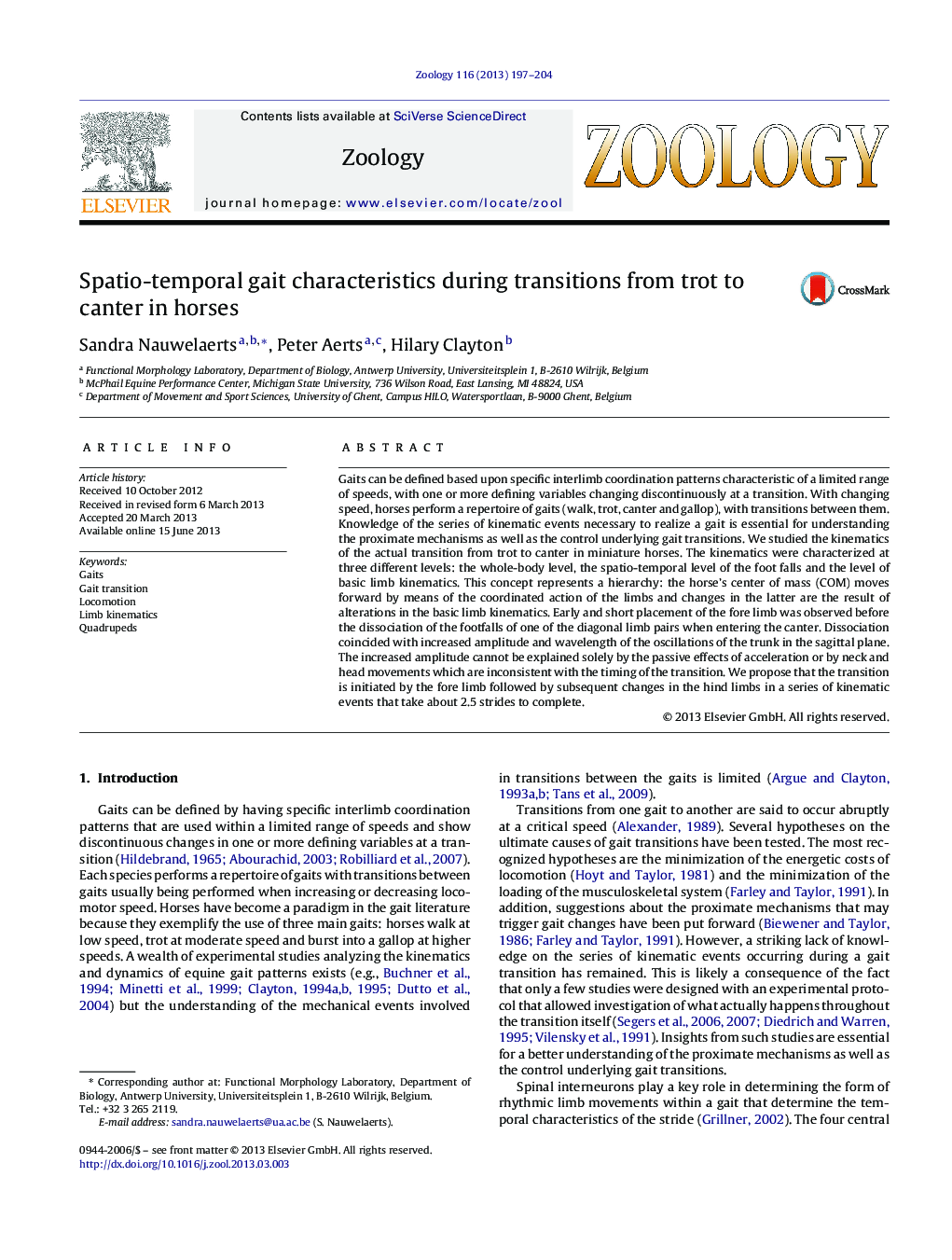| کد مقاله | کد نشریه | سال انتشار | مقاله انگلیسی | نسخه تمام متن |
|---|---|---|---|---|
| 2791008 | 1154830 | 2013 | 8 صفحه PDF | دانلود رایگان |

Gaits can be defined based upon specific interlimb coordination patterns characteristic of a limited range of speeds, with one or more defining variables changing discontinuously at a transition. With changing speed, horses perform a repertoire of gaits (walk, trot, canter and gallop), with transitions between them. Knowledge of the series of kinematic events necessary to realize a gait is essential for understanding the proximate mechanisms as well as the control underlying gait transitions. We studied the kinematics of the actual transition from trot to canter in miniature horses. The kinematics were characterized at three different levels: the whole-body level, the spatio-temporal level of the foot falls and the level of basic limb kinematics. This concept represents a hierarchy: the horse's center of mass (COM) moves forward by means of the coordinated action of the limbs and changes in the latter are the result of alterations in the basic limb kinematics. Early and short placement of the fore limb was observed before the dissociation of the footfalls of one of the diagonal limb pairs when entering the canter. Dissociation coincided with increased amplitude and wavelength of the oscillations of the trunk in the sagittal plane. The increased amplitude cannot be explained solely by the passive effects of acceleration or by neck and head movements which are inconsistent with the timing of the transition. We propose that the transition is initiated by the fore limb followed by subsequent changes in the hind limbs in a series of kinematic events that take about 2.5 strides to complete.
Journal: Zoology - Volume 116, Issue 4, August 2013, Pages 197–204